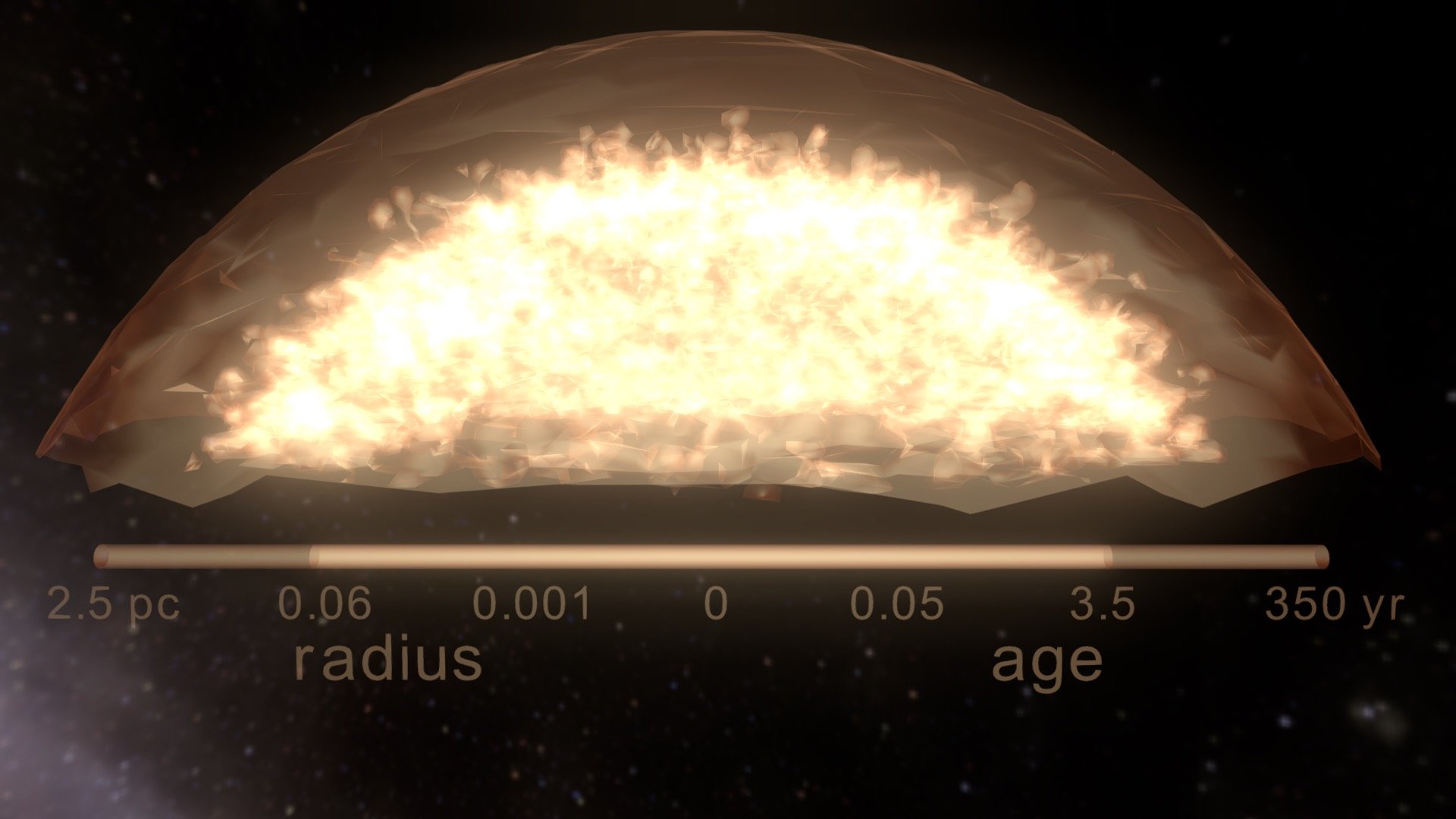
Hydrodynamic instability in supernova remnants
sketchfab
The animation vividly depicts the transformation of a supernova blast wave from the initial explosion to its fully expanded remnant after 350 years. Only a minor portion of the remnant is recreated in this simulation, allowing for clear examination of its structure at each evolutionary stage. The starting radius of the blast wave measures approximately 1e8 kilometers (100 million kilometers), while the final diameter reaches ~ 8e13 kilometers (2.5 parsec). A bar displayed at the bottom provides a logarithmic scale representing both age (in years) and radius (in parsecs, equivalent to 3.09e13 kilometers) of the blast wave. The intricate features observed within the remnant's interior are direct results of hydrodynamic instability occurring at the contact discontinuity between the shock-heated stellar debris (the ejecta) and the surrounding shock-heated ambient medium. This MHD simulation was executed using the FLASH code. For further information, consult Orlando et al.'s 2016 study, reference number 822, id. 22. The animation is courtesy of INAF-Osservatorio Astronomico di Palermo.
With this file you will be able to print Hydrodynamic instability in supernova remnants with your 3D printer. Click on the button and save the file on your computer to work, edit or customize your design. You can also find more 3D designs for printers on Hydrodynamic instability in supernova remnants.
